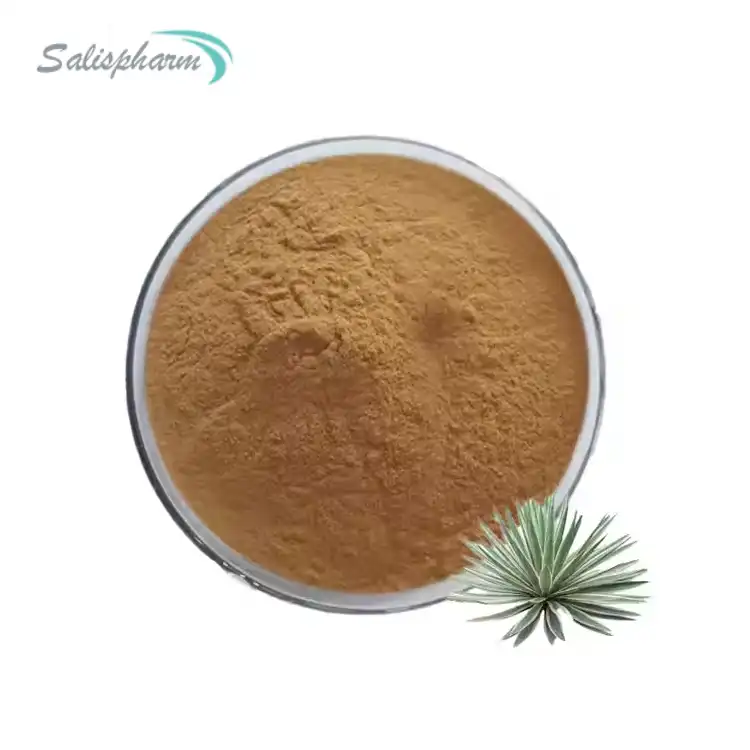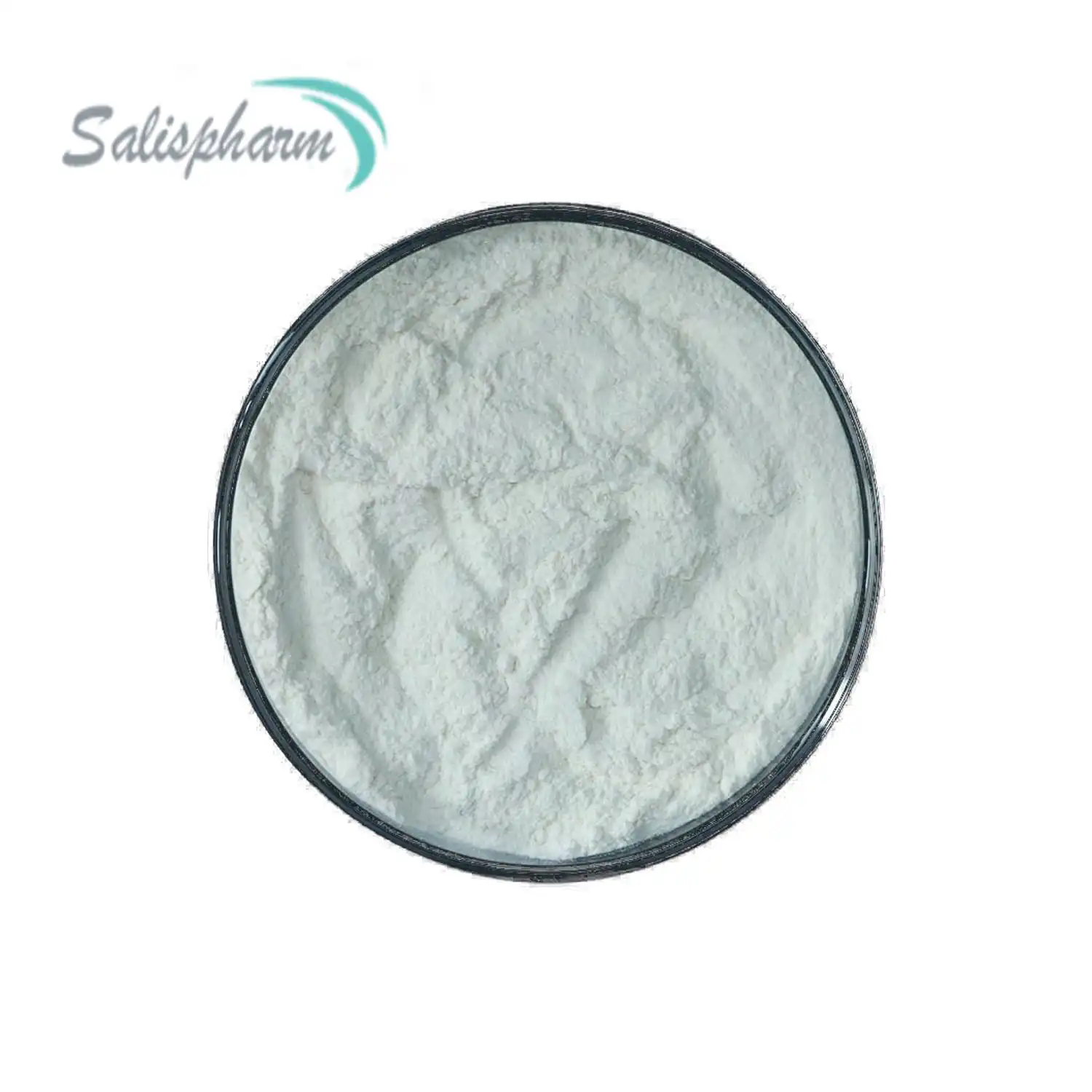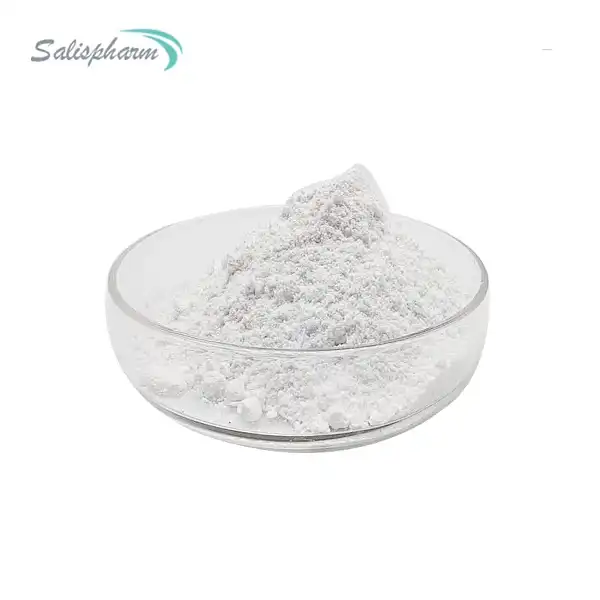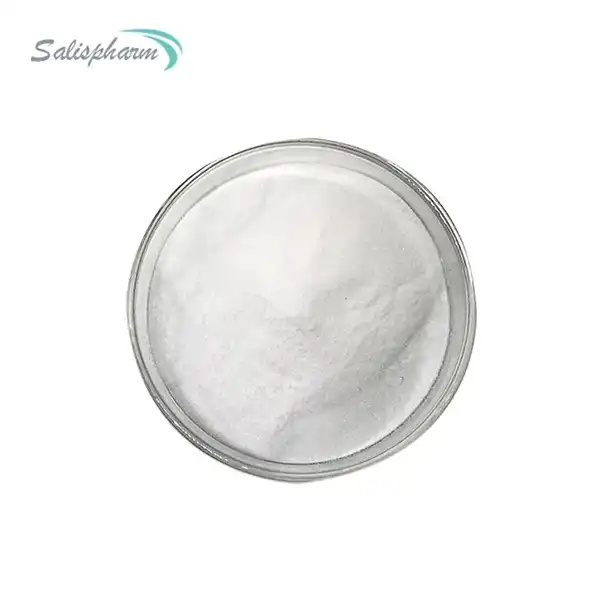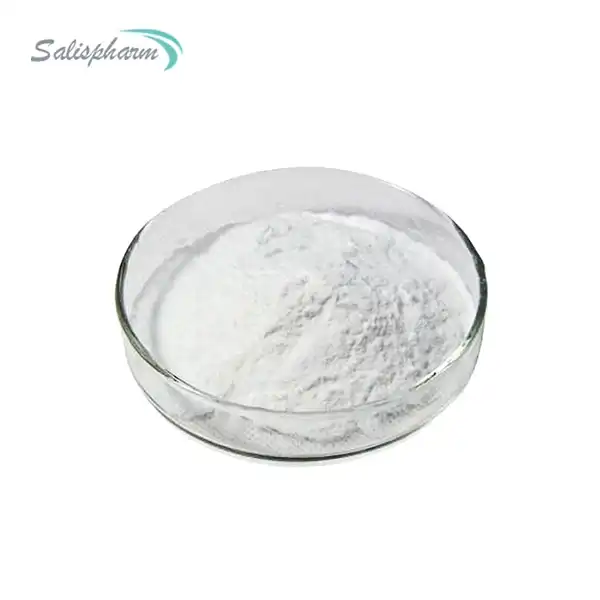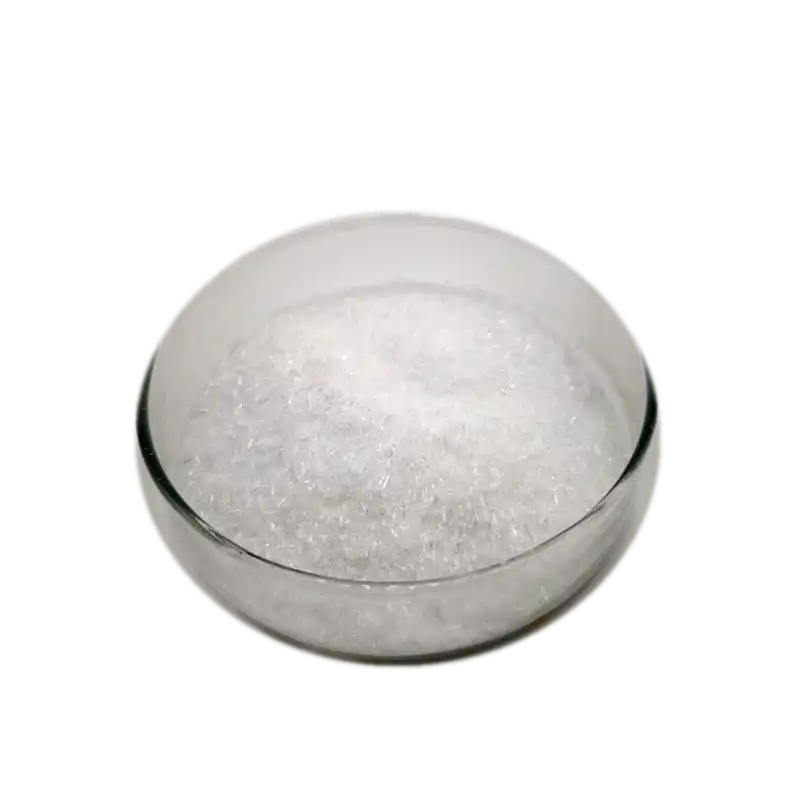Prednisolone powder is a synthetic corticosteroid medication widely used in the medical field for its potent anti-inflammatory and immunosuppressive properties. This versatile drug plays a crucial role in treating a variety of conditions across different medical specialties. As a glucocorticoid, prednisolone powder works by mimicking the effects of cortisol, a hormone naturally produced by the adrenal glands. Its ability to reduce inflammation and suppress the immune system makes it an invaluable tool in managing numerous health issues, from acute allergic reactions to chronic autoimmune disorders.
How does prednisolone powder differ from prednisone?
While prednisolone and prednisone are closely related to corticosteroids, they have distinct characteristics that set them apart. Prednisolone is the active metabolite of prednisone, meaning it's the form that actually exerts therapeutic effects in the body. When a patient takes prednisone, their liver must first convert it to prednisolone before it becomes active. This conversion process is not necessary with prednisolone powder, as it's already in its active form.
The key differences between prednisolone powder and prednisone include:
1. Bioavailability: Prednisolone powder generally has higher bioavailability compared to prednisone, especially when administered orally. This means that a larger percentage of the drug reaches the systemic circulation and is available to produce its therapeutic effects.
2. Onset of action: Due to its active state, prednisolone powder tends to have a faster onset of action compared to prednisone. This can be particularly beneficial in situations requiring rapid anti-inflammatory or immunosuppressive effects.
3. Liver metabolism: Patients with liver disease or impaired liver function may benefit more from prednisolone powder, as it doesn't require hepatic conversion to become active. This can lead to more predictable therapeutic outcomes in these populations.
4. Dosage considerations: Due to the differences in potency and bioavailability, dosages of prednisolone powder and prednisone are not always interchangeable. Healthcare providers must consider these factors when switching between the two medications or determining the appropriate dosage for a patient.
5. Formulations: While both drugs are available in various forms, prednisolone powder offers unique advantages in terms of flexibility in dosing and administration. It can be easily compounded into custom formulations, such as oral suspensions or topical preparations, to meet specific patient needs.
Understanding these differences is crucial for healthcare providers when deciding between prednisolone powder and prednisone. The choice often depends on the specific condition being treated, the patient's individual characteristics, and the desired therapeutic outcomes.
What conditions can prednisolone powder treat effectively?
Prednisolone powder's versatility makes it an effective treatment option for a wide range of medical conditions across various specialties. Its anti-inflammatory and immunosuppressive properties allow it to address both acute and chronic health issues. Some of the key conditions that prednisolone powder can treat effectively include:
1. Respiratory disorders: Prednisolone powder is frequently used to manage asthma exacerbations, chronic obstructive pulmonary disease (COPD), and other inflammatory lung conditions. It helps reduce airway inflammation, improving breathing and overall lung function.
2. Rheumatological diseases: Conditions such as rheumatoid arthritis, lupus, and polymyalgia rheumatica often respond well to prednisolone powder. It helps alleviate joint pain, stiffness, and swelling associated with these autoimmune disorders.
3. Dermatological conditions: Severe skin conditions like eczema, psoriasis, and allergic reactions can be effectively managed with prednisolone powder. It helps reduce inflammation, itching, and redness associated with these dermatological issues.
4. Gastrointestinal disorders: Inflammatory bowel diseases such as Crohn's disease and ulcerative colitis may be treated with prednisolone powder to reduce inflammation in the digestive tract and alleviate symptoms.
5. Hematological disorders: Certain blood disorders, including autoimmune hemolytic anemia and idiopathic thrombocytopenic purpura, can be managed with prednisolone powder to suppress the abnormal immune response.
6. Ocular conditions: Prednisolone powder is used in ophthalmology to treat various inflammatory eye conditions, including uveitis and optic neuritis.
7. Endocrine disorders: Conditions like adrenal insufficiency may require prednisolone powder as a replacement therapy to mimic the body's natural cortisol production.
8. Allergic reactions: Severe allergic reactions, including anaphylaxis, can be managed with prednisolone powder due to its rapid anti-inflammatory effects.
9. Neurological conditions: Some neurological disorders, such as multiple sclerosis exacerbations and certain types of neuropathy, may benefit from prednisolone powder treatment.
10. Oncology support: Prednisolone powder is often used in cancer treatment protocols to manage side effects of chemotherapy, reduce inflammation, and as part of certain lymphoma treatment regimens.
The effectiveness of prednisolone powder in treating these conditions stems from its ability to modulate the immune system and reduce inflammation throughout the body. By suppressing overactive immune responses and dampening inflammatory processes, prednisolone powder can provide significant relief and improve quality of life for patients suffering from a variety of disorders.
However, it's important to note that the use of prednisolone powder should always be under the guidance of a healthcare professional. The dosage, duration of treatment, and potential interactions with other medications need to be carefully considered to maximize therapeutic benefits while minimizing the risk of side effects.
What are the best practices for administering prednisolone powder?
Proper administration of prednisolone powder is crucial to ensure its effectiveness and minimize potential side effects. Healthcare providers and patients should be aware of the best practices for using this medication:
1. Dosage accuracy: Prednisolone powder allows for precise dosing, which is particularly important when treating conditions that require careful titration. Using a calibrated scale or specialized measuring tools ensures that the correct amount of powder is administered.
2. Timing of administration: Most prednisolone powder regimens involve morning dosing to mimic the body's natural cortisol rhythm. This can help reduce the risk of adrenal suppression and other side effects associated with long-term use.
3. Gradual tapering: When discontinuing prednisolone powder after long-term use, it's essential to taper the dose gradually. This allows the body's natural cortisol production to recover and prevents withdrawal symptoms.
4. Compounding considerations: Prednisolone powder can be compounded into various formulations, such as oral suspensions or topical preparations. When compounding, it's crucial to follow proper sterile techniques and use appropriate vehicles to ensure stability and bioavailability.
5. Storage and handling: Prednisolone powder should be stored in a cool, dry place away from direct sunlight. Proper handling techniques, including using gloves and avoiding inhalation of the powder, are important to prevent accidental exposure.
6. Patient education: Healthcare providers should educate patients on the importance of adhering to the prescribed regimen, potential side effects to watch for, and the need for regular follow-ups to monitor treatment progress.
7. Monitoring: Regular monitoring of patients on prednisolone powder is essential. This may include blood tests to check for electrolyte imbalances, blood sugar levels, and adrenal function, as well as bone density scans for those on long-term therapy.
8. Interaction awareness: Healthcare providers should be aware of potential drug interactions and adjust dosages or treatment plans accordingly. For example, certain medications may affect the metabolism of prednisolone powder, altering its effectiveness.
9. Individualized approach: The administration of prednisolone powder should be tailored to each patient's specific needs, taking into account factors such as age, weight, overall health status, and the condition being treated.
10. Alternative routes of administration: In some cases, alternative routes of administration, such as intravenous or intramuscular injections, may be considered for more rapid effects or in situations where oral administration is not feasible.
By following these best practices, healthcare providers can optimize the use of prednisolone powder, ensuring that patients receive the maximum therapeutic benefit while minimizing the risk of adverse effects. The flexibility and precision offered by prednisolone powder make it a valuable tool in the medical arsenal, allowing for personalized treatment approaches across a wide range of conditions.
In conclusion, prednisolone powder is a versatile and potent medication with a wide range of applications in modern medicine. Its ability to effectively treat numerous inflammatory and autoimmune conditions, coupled with its flexibility in dosing and administration, makes it an invaluable tool for healthcare providers. By understanding its uses, differences from related medications, and best practices for administration, both medical professionals and patients can harness the full potential of prednisolone powder in managing various health conditions. As with any powerful medication, its use should always be under the guidance of a qualified healthcare professional to ensure optimal outcomes and patient safety.
If you are also interested in this product and want to know more product details, or want to know about other related products, please feel free to contact iceyqiang@aliyun.com.
References:
1. Czock, D., Keller, F., Rasche, F. M., & Häussler, U. (2005). Pharmacokinetics and pharmacodynamics of systemically administered glucocorticoids. Clinical Pharmacokinetics, 44(1), 61-98.
2. Schäcke, H., Döcke, W. D., & Asadullah, K. (2002). Mechanisms involved in the side effects of glucocorticoids. Pharmacology & Therapeutics, 96(1), 23-43.
3. Buttgereit, F., Straub, R. H., Wehling, M., & Burmester, G. R. (2004). Glucocorticoids in the treatment of rheumatic diseases: an update on the mechanisms of action. Arthritis & Rheumatism, 50(11), 3408-3417.
4. Barnes, P. J. (2006). How corticosteroids control inflammation: Quintiles Prize Lecture 2005. British Journal of Pharmacology, 148(3), 245-254.
5. Rhen, T., & Cidlowski, J. A. (2005). Antiinflammatory action of glucocorticoids—new mechanisms for old drugs. New England Journal of Medicine, 353(16), 1711-1723.
6. Frey, F. J., & Frey, B. M. (1990). Clinical pharmacokinetics of prednisone and prednisolone. Clinical Pharmacokinetics, 19(2), 126-146.
7. Becker, D. E. (2013). Basic and clinical pharmacology of glucocorticosteroids. Anesthesia Progress, 60(1), 25-32.
8. Coutinho, A. E., & Chapman, K. E. (2011). The anti-inflammatory and immunosuppressive effects of glucocorticoids, recent developments and mechanistic insights. Molecular and Cellular Endocrinology, 335(1), 2-13.
9. Liu, D., Ahmet, A., Ward, L., Krishnamoorthy, P., Mandelcorn, E. D., Leigh, R., ... & Kim, H. (2013). A practical guide to the monitoring and management of the complications of systemic corticosteroid therapy. Allergy, Asthma & Clinical Immunology, 9(1), 30.
10. Strehl, C., & Buttgereit, F. (2013). Optimized glucocorticoid therapy: teaching old drugs new tricks. Molecular and Cellular Endocrinology, 380(1-2), 32-40.



